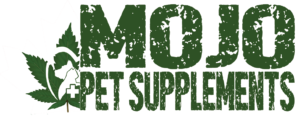Mojo Pet Supplements Veterinary Health Products (VHPs)
VHP (Veterinary Health Product) / NN (Notice of Notification)
A new notification program for veterinary health products (VHPs) came into effect on November 13, 2017.1
What You Need To Know
- The new program formalizes the Interim Notification Pilot Program (INPP) for companion animal VHPs,2 extends its application to food animals, and creates a mandatory rather than voluntary notification framework.
- It comes as part of Health Canada’s effort to mitigate the health risks associated with antimicrobial resistance—VHP uses could potentially reduce the need to use antimicrobials.3
- VHPs are low risk drugs in dosage form, used in managing animal health.
- The logistics around the process of notification has now been finalized.
The Details
- Law. This VHP program is a law, not a guidance. The mandatory reporting as part of the VHP program became law on November 13, 2017.
- Transition period for labelling. Different transition periods apply for products that have received INPP approval to those products that do not have INPP approval.
- Products with INPP notification number have an 18 month transition period and must comply with the new labeling requirements by May 13, 2019.
- Products without INPP notification number have a 6 month transition period and must comply with the new labeling requirements by May 13, 2018.
- Pre-notification before selling/importing. Companies are required to notify Health Canada at least 30 days before selling/importing a VHP or making a change to a marketed VHP. Upon accepting a notification application, Health Canada will issue a notification number for the VHP.
- Renewal. Although there is no annual renewal requirement for VHP notification, companies must re-notify Health Canada if there are changes to the original notification.
- Permitted substances. Compliant VHPs must only contain Health Canada approved medicinal and non-medicinal substances.
- The list of permitted active, homeopathic, and traditional medicine substances are described on List C: Veterinary Health Products,4 provided for in the amended Food and Drug Regulations. The list also specifies limitations on each substance, such as the species and routes of administration permitted.
- Health Canada also maintains a List of Permitted Substances,5 which includes non-medicinal ingredients, as well as the active, homeopathic, and traditional medicine substances described on List C.
- Companies may submit requests to Health Canada to amend the List of Permitted Substances. This also includes requests to modify the limitations of a List C substance. There must be sufficient scientific data and information regarding the safety of use in target animals or humans. The length of time for approval will vary for medicinal versus non-medicinal ingredients.
- Claims. VHPs are used for the maintenance and promotion of health and well being in food and companion animals. A VHP cannot claim use in the diagnosis, treatment, mitigation or prevention of a disease, disorder or abnormal physical state, or its symptoms. Therefore, a product making general health claims supported by sufficient evidence would be acceptable.
- Good manufacturing practices (GMPs). Manufacturers are required to meet the GMP requirements in the Natural Health Products Regulations (NHPR).
- Labeling. In addition to complying with the Food and Drug Regulations labelling requirements, VHP labels must also include the statement “Veterinary Health Product” and any additional mandatory statements specified on List C.

